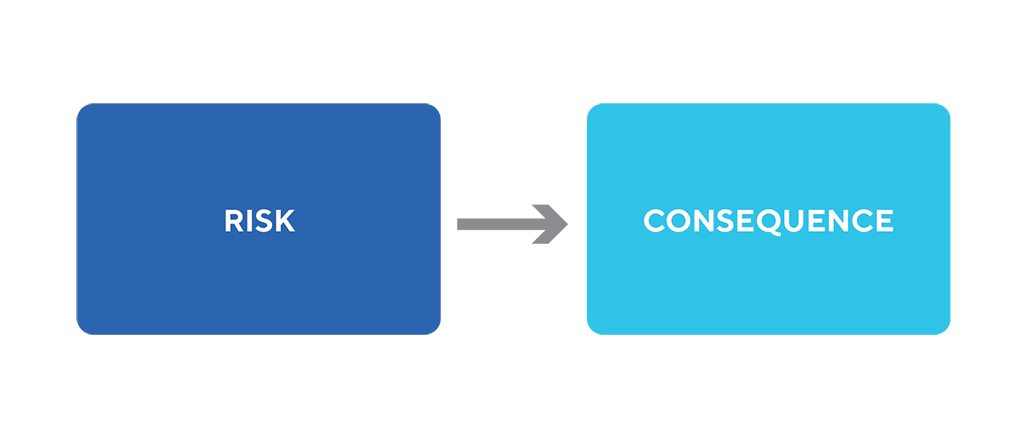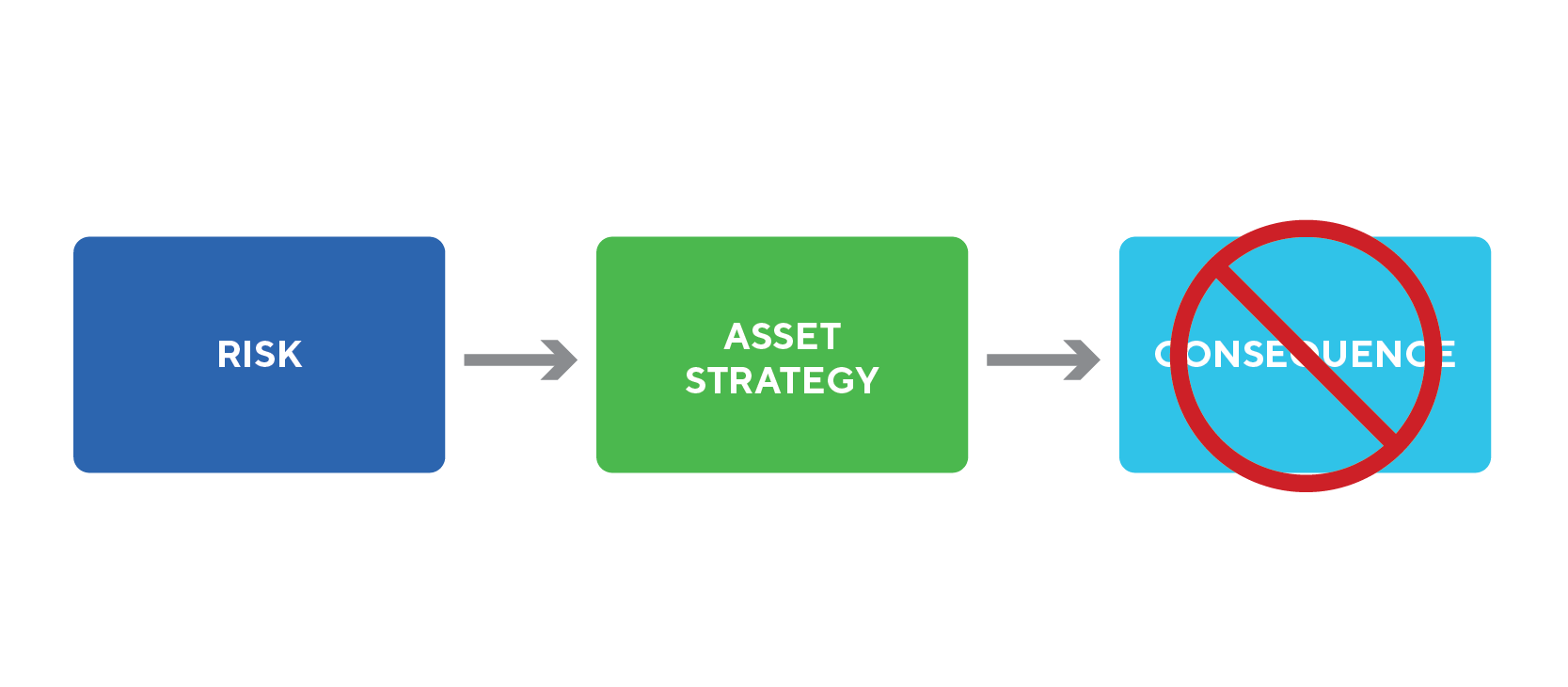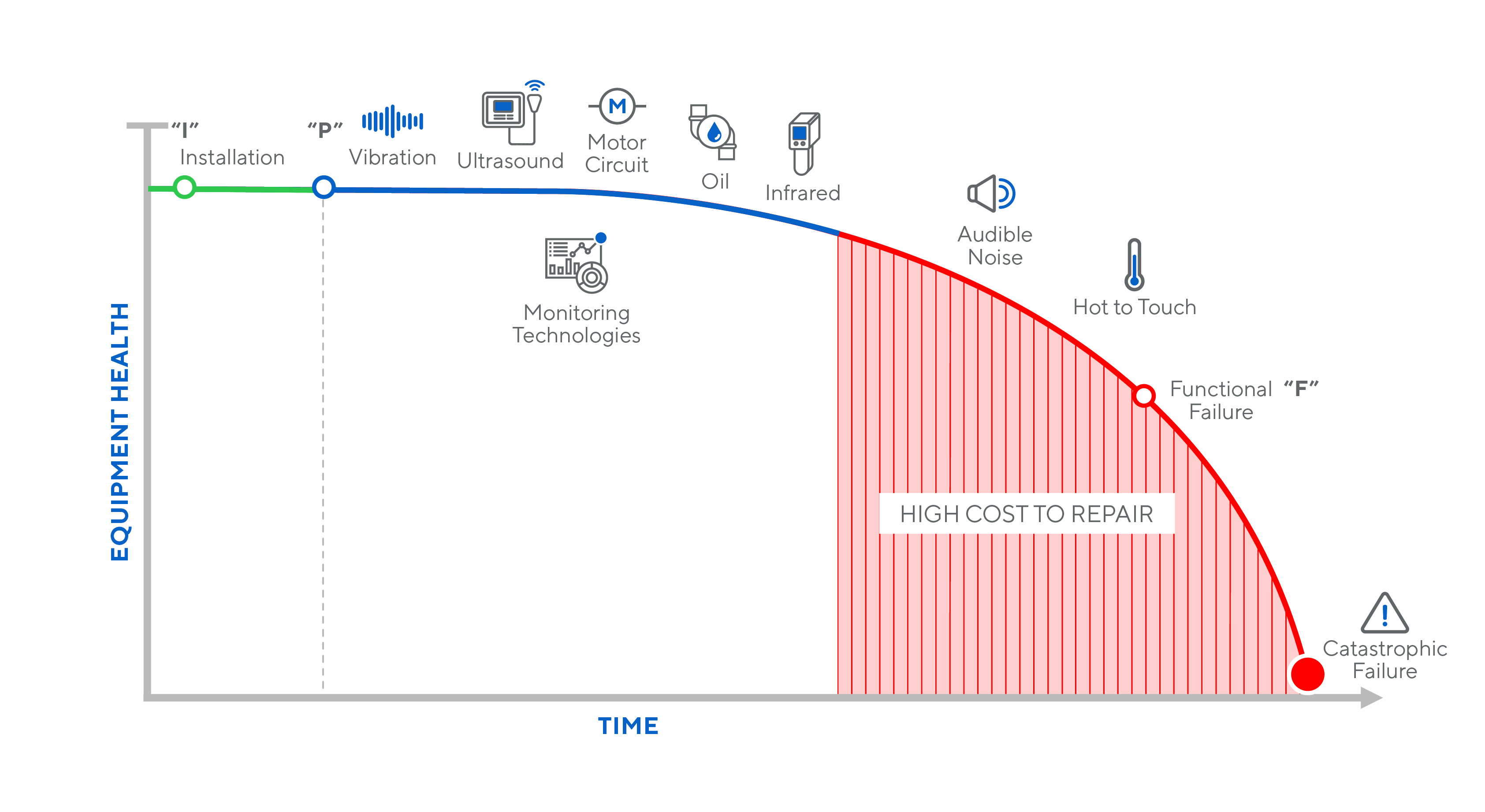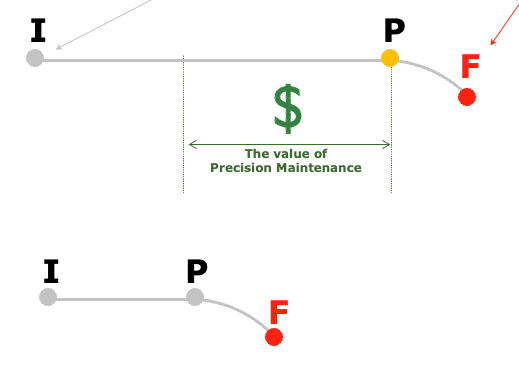
Asset Maintenance Strategy: Why it is Critical to Your Business
This article is the first in a series of three. It will discuss asset maintenance strategy and how it can lower risk. A strong asset strategy is critical for both you and your organization.
Future articles will cover creating the best asset strategy for your organization and discussing how to successfully implement this strategy to achieve positive outcomes.
What is an Asset Maintenance Strategy?
An asset maintenance strategy is a plan for managing our assets to achieve our organization's goals. It outlines the actions needed to maintain assets effectively.
What are your organization's goals? Safety, environmental performance, customer satisfaction, productivity, and profitability should be at the top of the list. An asset strategy is essential to achieving these goals.
ASSET MAINTENANCE STRATEGY: The proactive actions your organization will take to maintain your assets in a manner that is matched to the risk tolerance of your organization and will help best achieve the strategic goals of your organization.
Notice that there is an “s” at the end of the word asset in the definition. Your organization should examine all of its assets to determine the best strategy. This involves understanding how each asset contributes to achieving the organization's goals. The organization can make informed decisions on the most effective strategy by analyzing how the assets work together and their interdependencies.
Treating all assets equally would be incorrect, as not all pumps and valves are the same or provide the same function. Knowing what each asset does and appropriately addressing any potential loss of its function is crucial for success.
We might miss the broader perspective when we only focus on one thing. This can cause us to overvalue certain assets, especially ones that are lower on our list of priorities. We can improve our strategy by focusing on each asset's function and aligning actions with risks. This will help us achieve better results and enjoy the benefits that come with it.
Why is Asset Maintenance Management Important?
Your asset maintenance plan defines the risks your organization faces with its physical assets. It also outlines the steps you will take to reduce those risks. Each asset has a specific function and associated risks, not all assets serve the same purpose in this proposition. A good asset maintenance strategy helps you make targeted interventions based on the risks and likelihood of a loss of function for each individual asset.
Organizations face various risks, such as environmental, health, and safety concerns. Listed below are other risk categories to consider.
COMMON RISK FACTORS
- Environmental
- Health and Safety (both Employee and Community)
- Financial
- Compliance with Regulatory Commitments
- Product Quality, Customer Service, and Reputation
- Maintenance Cost – to Include both Cost to Maintain and to Restore Capability
- Reputational Impact
- Employee Morale and Satisfaction
What does any of this have to do with your asset maintenance strategy? Your asset maintenance strategy is the actions you take to reduce your organization's risks. It is all about managing the risks your organization faces.
Different types of facilities, such as nuclear power plants, ice cream factories, and offshore oil platforms, require unique strategies. Each has its own collection of assets, operating context, risks, and consequences of a loss of function. We must avoid phrases like “industry best practice” and address the risk at our own doorsteps.


Elements of an Asset Maintenance Strategy
ELEMENTS OF AN ASSET MAINTENANCE STRATEGY |
|
Element |
Description |
Asset Definition |
A list of assets, organized by object type or asset class, with an explanation of the function provided by the assets. |
Failure Mode Mapping |
A detailed mapping of common ways assets may fail. The focus will be on what is most likely to happen, considering scenarios that are "likely" or "probable." |
Consequence Definition |
Some indication of these failure modes' impact on your ability to meet the organization's goals. |
Outline plans to address these effects in a statement. This statement will include details and frequency of occurrence. Focusing on the "what" rather than the "how". |
|

When choosing how to care for assets, there are various ways to reduce risk, including oddly enough, doing nothing. These actions must of course match the consequences your organization is likely to face should you experience a loss of function from that asset. Some of these actions include:
- End of Life Overhaul or Complete Asset Replacement
- Time Based Preventive Maintenance (Clean, Lubricate, Adjust, Component Replacement)
- Time Based Activities Designed to Expose Faults (Alarm Testing for Example)
- Time Based Inspections Designed to Find Faults in the Asset – Technology Based
- Time Based Inspections Designed to Find Faults in the Asset – Non-Technology Based
- Modifications to the Asset Designed to Reduce Risk – Including Installed Redundancy
- Spare Parts Strategies to Allow for Ease of Recovery
- Run to Failure (RTF)
That last element may seem odd but is truly important for us to get our heads around. We cannot, nor should we try, to predict or prevent all failures on all assets. Again, our actions should match the risk, and we should design strategies commensurate with the risk at hand.
Focusing on protecting critical assets that could cause significant issues for the organization is crucial. These assets should get the most attention and resources to prevent any issues from happening.
To conserve resources and concentrate on important assets, we should use a run-to-failure strategy for assets with low risk. You can easily fix these assets after a failure. This approach helps us prioritize tasks and utilize our abilities efficiently.
In all cases, the asset strategy is used to define that proactive action you are intending to take to position your organization for success in the face of risk. In the case of the RTF option, it is intentional inaction, with a recovery plan well developed to help the organization recover in the most effective manner.
The Essence of Proactive
Your asset strategy is often referred to as your “Proactive Asset Strategy”, and this is largely true, omitting those cases where we elect to take an RTF position. What does it mean to be proactive?
These are those actions you take prior to experiencing the risk that will help you eliminate, prevent, detect and prevent, minimize the impact of each risk factor, or recover once you have experienced that risk factor - all carried out before you actually experience that failure mode and its associated risk.
PROACTIVE
Acting before conditions require that you do so thereby avoiding the failure and loss of function before it excessively impacts the organization. It entails acting at a time of your choosing. You have time to prepare in advance as the loss of function has not yet occurred.
REACTIVE
Addressing a defect in your asset because you have no other choice; you have experienced the loss of function. In this case, the asset determines the time when the action must be taken. You have no time to prepare in advance, you must react.
Perhaps the concept of proactive and reactive maintenance is best illustrated by the classic P-F curve shown in the illustration and described in the table below.

Elements of the I-P-F Curve |
||
I |
Installation |
Optimal Equipment Condition – Initial Installation or Post-Rebuild – Assuming Highest Quality Precision Maintenance |
P |
Initiation of Defect |
Moment in time where the specific defect (failure mode) begins within the asset – it’s all downhill from here |
F |
Loss of Function |
Point where the asset can no longer sustain/provide its intended function (flowrate, speed, product quality, energy consumption, etc.) |
I-P |
Defect Free Zone |
Segment of the curve where no defects exist – key is to maintain this high state of equipment condition through cleaning, lubrication, minor adjustment, proactive component replacement |
P-F |
Degradation to Loss of Function |
Segment of the curve where a defect exists – the question is can the organization detect it, prepare, and eliminate it (restore the asset) before we reach point F. Reaching point F is the definition of a reactive state. |
A couple of interesting comments on the different zones illustrated in the curve; the I-P interval (defect-free zone) and the P-F interval (degradation to loss of function):
- If you installed (overhauled) your assets with precision, you should enjoy a long I-P interval. If you cut corners and perform low quality installation (overhaul), expect a short one.

- Elements from the CLAIR model that keep us in the I-P interval are CLEAN, LUBRICATE, ADJUST, and REPAIR (component replacement)
- Elements from the CLAIR model that are useful in the P-F interval are INSPECT
- At any given moment, we can never be quite sure where we are in the I-P, or the P-F. This is why we perform all elements of the CLAIR model simultaneously hoping for the best (CLEAN, LUBRICATE, ADJUST, and REPAIR), but searching for the worst (INSPECT)
- It is my opinion, that the primary value proposition of the maintenance and reliability organizations is to constantly strive to move away from Point F on the curve, towards Point I (again negating where we have intentionally elected RTF)
Conclusion
We will talk about this execution, with precision and efficiency in later articles, and delve into some ideas around continuous improvement.
For today’s discussion, I hope you have gained an appreciation for both the science and rigorous discipline that is required to develop an asset maintenance strategy that returns continuous results for your organization. Remember, this is not a one size fits all situation, at the functional level, your organization, your assets, and the risk you face daily are different than any other facility in the world, and it is only through thoughtful design that you can deliver the results to your organization that you deserve.
About the Author
Mike Gehloff

Mike Gehloff has worked in the maintenance and reliability discipline for over 30 years with a wide range of experience both as a practitioner and a consultant. His area of expertise lies within the social sciences related to the discipline, particularly in the work control (maintenance planning and scheduling), operator care, and management systems areas.
Mike has worked extensively in the steel industry and held several corporate and division-level reliability positions. He also has experience in the mining, food and beverage, oil and gas, and power generation industries with a proven track record of delivering results. Mike is particularly effective in team-based environments where frontline associates are empowered to make a change in their organization. Breaking down barriers to communication, motivation, and a set of common goals for the organization are all areas that represent Mike's professional passion.
Mike graduated from Eckerd College. He is a Certified Maintenance and Reliability Professional (CMRP), as well as a Certified Plant Maintenance Manager (CPMM). Mike is also a Six Sigma Black Belt and has earned a Master of Business Administration from the University of Florida. Mike is always open to adventure and has an extensive international travel resume.
Connect with Mike on LinkedIn.
ABOUT ALLIED RELIABILITY
Allied Reliability provides asset management consulting and predictive maintenance solutions across the lifecycle of your production assets to deliver required throughput at lowest operating cost while managing asset risk. We do this by partnering with our clients, applying our proven asset management methodology, and leveraging decades of practitioner experience across more verticals than any other provider. Our asset management solutions include Consulting & Training, Condition-based Maintenance, Industrial Staffing, Electrical Services, and Machine Reliability.
Subscribe to our Blog
Receive the latest insights on reliability, maintenance, and asset management best practices.